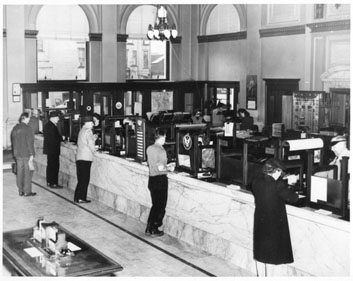How much cash should we keep on hand?
Well, you would think little to none if you look at most small businesses. That’s because, other than not making money, we don’t know how much we should have on hand and why.
We should have 30 days’ cash on hand, as calculated from the Balance Sheet at the end of the month.
 Why?
Why?
Stuff happens. It’s the same concept as “safety stock” in inventory. You don’t want to go below a certain amount for this assures you have wiggle room when, not if, an extraordinary event happens.
Believe me they do.
Not having a cash reserve and your biggest customer go out of business, key employee leaves, or you get hit with an extraordinary expense you didn’t see coming is the essential reason to maintain minimum cash on hand. Stuff like that.
I just lived through a 1000-year flood here in West Virginia. Wasn’t effected as were many of my business neighbors, but I can tell you that many will never reopen. Elsewhere in the country there’s fires, viruses and earthquakes. One printer I know contracted Lime disease which became his personal disaster. These are other examples of true emergencies and why you must maintain a strong cash position.
But it’s more than that. With adequate cash on hand, owners can take vacations without having to run to the mailbox to grab the checks and deposit them so that the checks we’ve written will clear.
Even more, when we have adequate cash on hand, we get better prices! That’s right. Cash on hand forms the basis of our pricing backbone. Without cash, we need each and every job and we sharpen our pencil and cut our price. With cash, we can take the position that, “We’d love to do business with you but I don’t have to do business with you in order to meet payroll.” So, cash on hand is one of the fundaments of “pricing backbone.”
So, how much?
As I said, 30 day’s cash on hand.
Yeah, butta how do you figure that? Here’s an easy, non-accountant way of doing it (not technically precise but close enough for us).
Assume your sales were $365,000 per year. Divide that by 365 days (yes, I know you’re not open 7 days a week but just go along with it), and that gives you $1,000 a day. Now multiply that by 30 days and you get $30,000 or thirty days’ cash on hand (more accurately 30 days’ sales as cash on hand but let’s not quibble).
Now you do the same calculation based on your sales level and compare with what you really have on hand.
Yeah, butta, what’s Cash?
Cash is anything that’s real cash right now (cash on hand, cash in your checkbook) or anything that can be converted to cash within twenty-four hours (or thirty-six hours, the definitions vary somewhat and I use thirty-six).
Point is, NOT something that takes you a week or a month to get. A Certificate of Deposit that can only be withdrawn every 90 days is NOT cash for the purpose of this calculation. Cash value of a whole life insurance policy that you may draw against is NOT cash.
Neither is drawing the money out of the business and putting it into a personal savings account only you control under the theory that you’ll be able to put it back in the business at any time when it’s needed. Problem I’ve seen repeated many times over the years is that we spend or pledge it for something else and it’s not there when the business needs it.
Said another way, the business needs a certain amount of cash on hand to operate. Accounting gods define that as 30 days’. So, it’s not YOUR personal cash to withdraw in the first place. It belongs to the business and the business is much like the family farm. Don’t plant the same crop over and over and wear out the soil and always save back some seed corn. Never know when there will be a drought or a business emergency.
Strength Measure
Days’ cash on hand is one of the two primary strength measures of a business. The other is the current ratio. And a strength measure is a way to determine whether your business will withstand adversity when, not if, it happens.
Let me know if questions.
= = = = = =
How to Build Cash in the first place
Simple answer is to have more cash coming in than going out, but it’s more complex than that. Check out a webinar I did recently on the Seven Common Cash Leaks in the business.
https://attendee.gotowebinar.com/recording/8329752032972189188
And I will be glad to do a quick analysis of your financials to help you see. Just message me tom@cprint.com.
Now the precise answer is that you should always work with a cash-forward budget which is what we do with all CPrinters. In fact, everyone in the CPrint program knows where their cash is now and can predict where it will be twelve months from now.
CPrint Gold
I am extremely proud to announce the addition of three new affiliates in the CPrint Gold program in the past thirty days. They’re located in Atlanta, Georgia; Houston, Texas; and near Annapolis, Maryland.
We affordably work with numerous printers throughout the United States on a weekly basis to help them improve their business and specifically work on increasing cash where necessary, as well as many other issues such as personnel, business to business sales, organizing so everything gets done and good old “time management.” If you’d like to know more and see if CPrint Gold would be of help to your business, email me at tom@cprint.com and let’s chat.
Inexpensive or Cheap Advice
Check out our many pricing guides as well as other topical advice at https://crouser.com/shop/. They’re inexpensive, cheap and some are downright free.
Happy Trails,
Tom Crouser







Comments are closed.